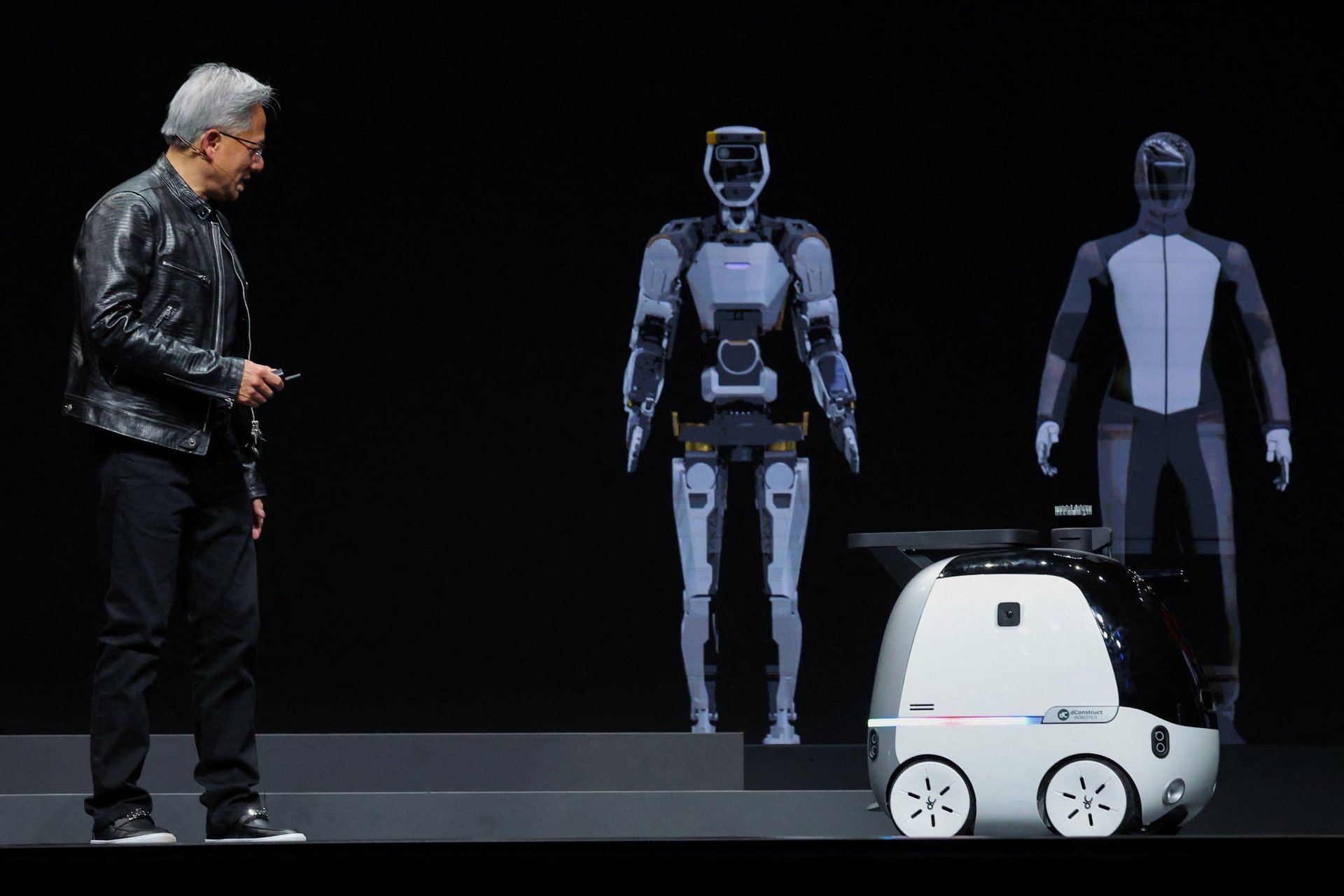This is AI's 'next wave,' according to Nvidia CEO Jensen Huang
The chipmaker's chief executive said robots and "AI that understands the laws of physics" are the next wave of the technology

Nvidia is powering the current wave of generative artificial intelligence, and chief executive Jensen Huang says robots are next.
Suggested Reading
“The next wave of AI is physical AI,” Huang said Sunday ahead of COMPUTEX, an annual tech trade show in Taiwan. “AI that understands the laws of physics, AI that can work among us.”
Related Content
Physical AI is “models that can understand instructions and autonomously perform complex tasks in the real world,” according to Nvidia. The company’s Isaac AI robot development platform is already being used to improve efficiency in factories and warehouses, including those for BYD Electronics and Siemens. Isaac is being used for research, development, and production of “tens of millions” of AI-powered autonomous machines and robots, including industrial arms and humanoids, according to the company.
“Robotics is here. Physical AI is here. This is not science fiction, and it’s being used all over Taiwan. It’s just really, really exciting,” Huang said.
There are currently over five million preprogrammed robots being tested and validated around the world, including through digital twin simulations in Nvidia’s Omniverse, for use in factories, according to Nvidia.
“All the factories will be robotic,” Huang said. “The factories will orchestrate robots, and those robots will be building products that are robotic.”
Huang also announced Nvidia’s plans for AI chips — just months after unveiling its highly-anticipated Blackwell platform in March. The Blackwell Ultra chip is set for 2025, while its next-generation AI chip platform, Rubin, is coming in 2026, Huang said. The new Rubin platform will include new graphics processing units, or GPUs, a new central processing unit (CPU) called Vera, and advanced networking chips.
Nvidia is on a “one-year rhythm” for announcing new chips, Huang said. He also made this announcement during the company’s first quarter earnings call for fiscal year 2025. The chipmaker beat Wall Street’s expectations, reporting a record $26 billion in revenue — up 262% from the previous year.
